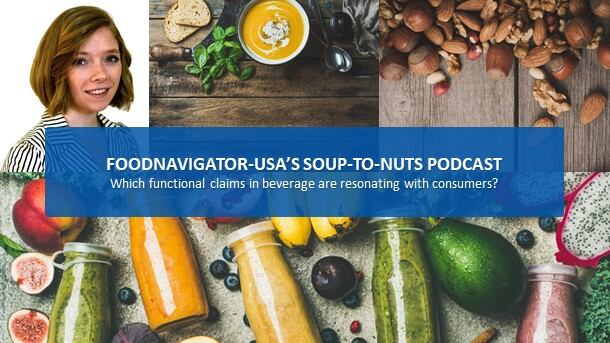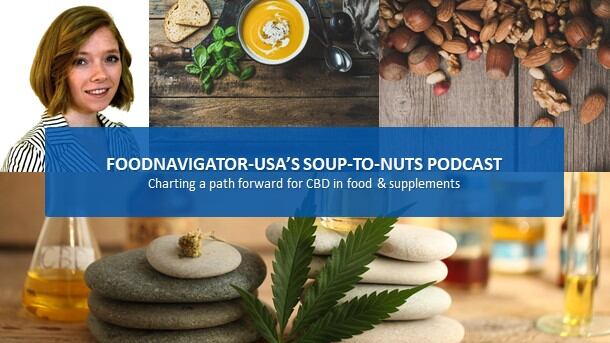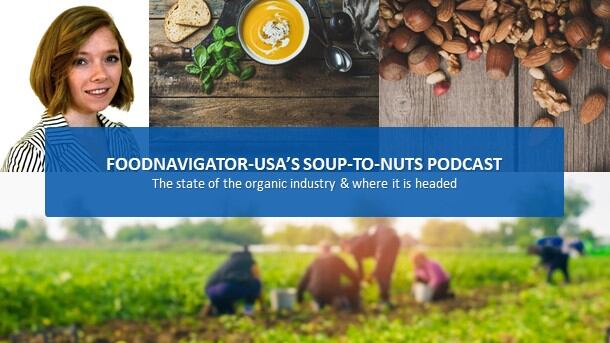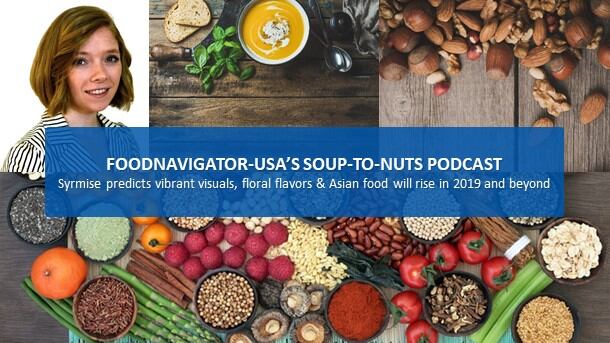The result is an increasingly competitive landscape with more companies flooding the market with drinks offering a variety of benefits, flavors and even textures in a near infinite number of permutations with the hope that something will catch shoppers’ attention and gain traction.
To help even the odds of success, I caught up with Jenny Zegler, an associate director on Mintel’s food and drink platform, at IFT19 in New Orleans earlier this month. In this episode of FoodNavigator-USA’s Soup-To-Nuts Podcast, she shares which functions are emerging as winners in the beverage space and which categories are currying consumers’ favor currently. Dan Force, who manages the innovative products division at the ingredient, flavor and blending company Prinova Group also chimes in with what he sees as the next big winners in beverage.
Blurring lines are double-edged sword
According to Zegler the blurring between beverage categories and between beverage and food is a double-edge sword that brings opportunity, but also significant challenges.
“We are starting see more with what we call beverage blurring – just so many different categories answering almost every sing need that consumers want,” she said.
From a consumer perspective the trend is “beneficial [because] they get to choose. They get to have fun with what they are doing,” she said. “But from a category or company landscape it is so challenging to try and figure out what do people want, what can we mix, what flavors belong where because consumers just don’t care. They are just looking for something that seems like it tastes good, might be new, might be fun” and what might be “cool.”
So, what do consumers consider cool? Or if not ‘cool’ at least a worthy addition to their daily diet? According to Zegler, consumers are interested in beverages that will support their gut health. And in particular, they want kombucha. But not just any kombucha. They want kombucha that is local and that packs a sour, vinegary punch.
She explained that the evolution of local kombucha is following the path that craft beer blazed, and that the trend not only creates a connection with consumers but also creates a sense that the product is fresher and will better deliver the gut health benefits for which it is known.
As the kombucha category grows, it “is also kicking off a whole new interest in sour flavors that, you know especially for that younger generation – they are probably the Sour Patch Kid flavor lovers, and so they like that sour. But then we see that appealing to older age groups as well as they move away from sweet.”
Relaxation & stress-relief claims resonate with busy consumers
Consumers also are turning to beverage for relaxation and stress relief. But while alcohol might have filled this niche in the past, modern shoppers don’t want to suffer the side effects of alcohol and so are looking for other options.
“We see so many people right now saying they are maxed in terms of what they are committed to or stressed out by the news or the state of the world – so they are looking in many different parts of their lives for what they say or we call ‘self-care,’” and beverages are well-positioned to meet that need, Zegler said.
She explained that consumers consider teas to be naturally relaxing and therefore those ingredients are leading the space. But other emerging ingredients include CBD, holy basil, ashwaganda, medicinal mushrooms and others.
But ingredients are not the only way to convey relaxation or stress-relief. The packaging and overall beverage can create an experience of relaxation, depending on how it is marketed and how consumers are supposed to consume them, Zegler said.
Energy is still a growth driver
As important at relaxation is to consumers, energy is often more important, which is why Zegler says they continue to reach for beverages that can deliver an extra boost. But, she adds, consumers are becoming more sophisticated in their approach to energy and are looking for ingredients they understand and recognize.
“People want energy and they need energy in their lives, but the traditional Red Bull and Monster energy drinks are off-putting to some people, so they may be turning to coffee,” which offers not only a natural caffeine boost but a sense of indulgence, she said.
Other energizing ingredients consumers are embracing include coffee fruit, green tea, yerba matte and B vitamins, Zegler said.
Low- and no-alcohol beer ekes out space in sports recovery
Another emerging trend that ties together consumer interest in energy, fitness and relaxation is the evolution of low- or no-alcohol beer targeted at athletes as a post-workout source of hydration and cool down, according to Zegler.
She explained that brewers are realizing that race participants and endurance athletes have a tradition of enjoying beer after an event, but they also don’t want to disrupt their fitness goals. So by offering low- or no-alcohol options that still have a full taste they can quench athletes thirst and replace electrolytes without compromising their health.
Cognitive health is a leading function for beverages
Consumers don’t just want products that support their physical health – they also increasingly want products that support their cognitive health, according to Force, who noted that Prinova showcased at IFT a new ingredient that meets this demand.
“Cognitive nootropics are really starting to pick up for us, so we are showing our new patented ingredient NeuroBloom at IFT this year. I am seeing a lot of positive responses around that really firing off on cognitive health in general,” Force said.
He explained that clinical studies support consuming NeuroBloom daily for four to six weeks as part of a brain wellness regiment.
Prinova also showcased at IFT beverage prototypes that underscored the trends Zegler noted, including energy and relaxation. Force echoed Zegler in noting that consumers want a variety of different ingredients that support these functions, but they also want to recognize them.
Location, location, location
Offering the right function to the right consumer in the right format is no doubt a tall order – but it isn’t the only hurdle manufacturers playing in this space face. Zegler notes that as competition increases, manufacturers also need to ensure they are offering their beverage in the right place and that they are building a brand that earns consumer loyalty beyond the key ingredients or flavors – otherwise they risk becoming a commodity product.
“There are so many new innovations. A lot of people are trying to try something new and we have so many distribution points for beverages,” but industry needs to ensure it is providing the right function at the right place, she said.
For example, she asked, are relaxation beverages best positioned on a college campus? Or is there another place where they will sell better?
Companies also need to focus on brand building because there are so many options available now that many consumers are trying whatever they see, but without a connection to the company or product they likely won’t come back to it, she warned.




